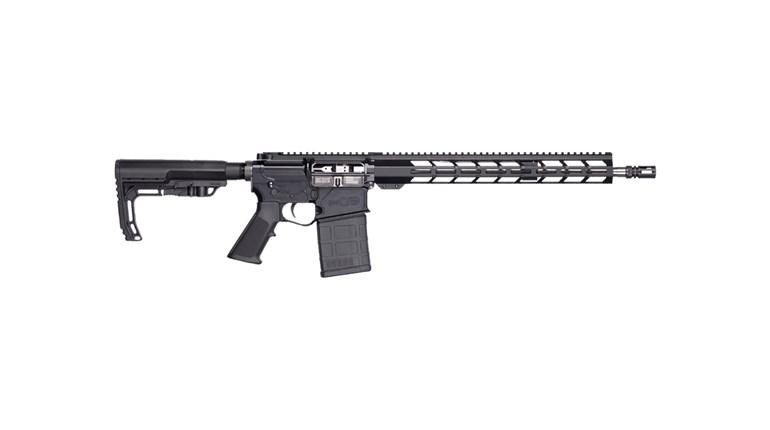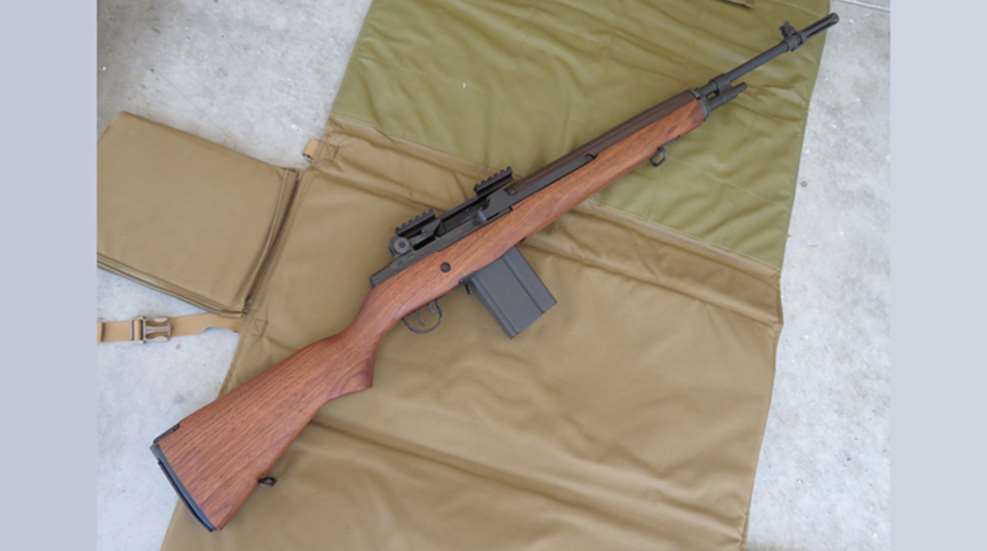
The M14 was a significant improvement over the M1 Garand, the rifle it replaced. Chambered in 7.62 NATO and featuring a detachable 20-round magazine, the M14 offered more firepower, faster reloads and a selective-fire feature. Well, maybe the selective-fire feature wasn’t so much of an improvement. In full auto mode, the M14 was nearly uncontrollable, which is why the M14 was mostly used in semi-automatic mode. At least that’s what some of my pals say who were deployed to Vietnam in the early 1960s.
The thing about the M14 that my buddies mostly recall is they liked it for its reliability, accuracy and power. They hated the M14 for its weight, which was close to 11 pounds loaded. It was also long, over 44 inches, and wasn’t as maneuverable in the dense jungle environment. If you think about it, the M14 was an old wood-and-steel, combat-rifle design that was optimized with a detachable-box magazine and chambered in a more recoil friendly round. It wasn’t really the future. 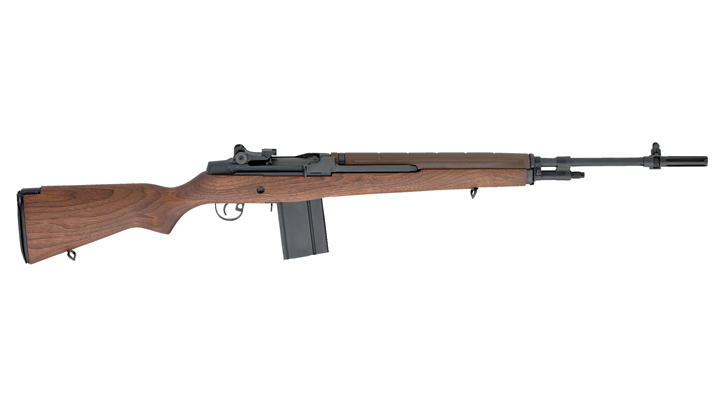
The M16 was the future, but that’s a different story. Suffice to say the M14 was the epitome of the classic wood and steel battle rifle. The M14 also had one of the shortest service lives of any U.S. Military infantry rifle. In was adopted in 1959 and by 1964 it was replaced with the M16. You would think the M14 would be a footnote in the book of U.S. combat rifles, but that's not the case.
What was discovered during the Vietnam War was that there was a real need for sniper rifles. Winchester and Remington bolt-action rifles designed for hunting were initially outfitted with sporting goods store optics. Then the Army had a sort of an epiphany: What about the M14? The Army transformed the M14 into the X21M sniper rifle.
The rest, they say, is history. The M14 turned out to be a better sniper rifle than battle rifle and is still in service as a designated marksman rifle for the U.S. Marine Corps. The M14 in its new roles goes by a variety of names including the M25 by the Army and Navy and the M39 by the Marines. It’s seen service in Iraq and Afghanistan and that says a lot for a rifle design that’s over 60 years old.
The fact is, the M14 is a really excellent example of the quintessential wood and steel battle rifle. It is accurate, offers fast follow-up shots, it is extremely reliable, and it takes optics relatively easily. The M1A Standard from Springfield is a reproduction of that classic M14 rifle retrofitted for civilian use. The Standard comes chambered .308 Win. or 7.62 NATO. 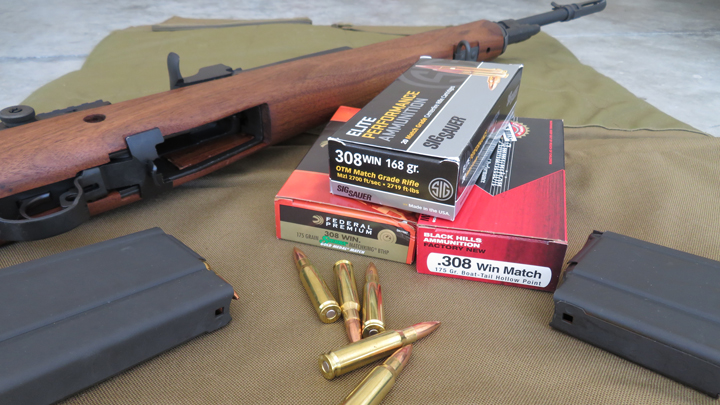
There has been a lot written on the differences between these calibers and I’ll hold my own with any caliber-ophile; suffice to say I have used both in the M1A without issue. I stay away from soft point bullets or light magnum loaded ammo. You can shoot soft points in the M1A but the lead tips get dinged up and will gunk up the works. Light magnum loads make the action work too hard and can bend an operating rod. When I hunt with my M1A, I use polymer-tipped expanding bullets or copper bullets. I also use a five-round magazine when hunting.
The M1A, like the M14, uses a gas-operated, rotating-bolt mechanism that is smooth. Competition versions of the M1A have super slick actions. The action also operates over your support hand unlike an AR mechanism that operates under your nose. The balance of the M1A is different from an AR in a good way.
The most rewarding time spent behind an M1A, in my opinion, is on the range. Shooting prone or from a bench rest, the M1A is the type of rifle that is forgiving. It wants you to shoot well and if you use the two-stage National Match tuned trigger, and the National Match front sight and a military-style rear aperture sight, you can create some densely clusters holes down range. My Standard model has the classic wood stock and it just begs to be exercised.
The weight of the rifle is an asset when shooting for accuracy, helping to steady the rifle and mitigate recoil. The M1A is also a great rifle to shoot with a sling. Wrapping my arm with the sling and taking a seated position, I understand the addiction shooters who compete in high-power competition feel. The rifle sits rock steady while I do my part behind the trigger. With open sights, my best groups hover around 2 to 2.5 MOA. With an optic they are slightly tighter. For best accuracy, I use match ammo. The sweet spot for bullet weight is 168 to 175 grains. The rifle sings with boattail hollow points.
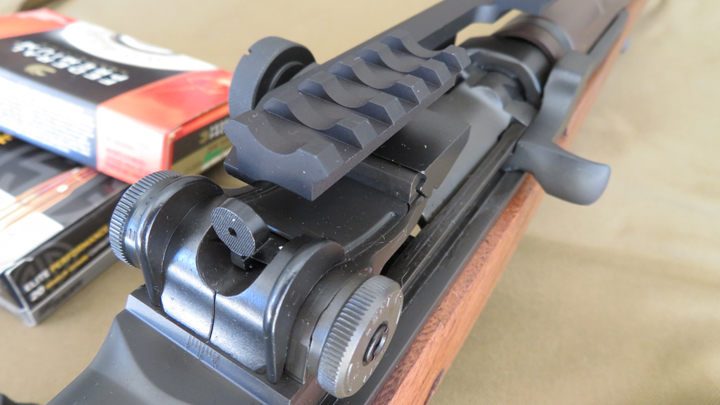
Since the M14 was designed to utilize a scope, a side mount is required. I’ve successfully used Sadlak mounts, what most consider the gold standard in M14 scope mounts, and Springfield Armory mounts. One thing to note when mounting a scope on an M1A, you will need to add a cheek rest. There are many different types to choose from. The rest will provide you a more comfortable shooting position so you can concentrate on aiming.
I love the caliber, ease of use, trigger, detachable magazine, and sights on the M1A.This real story of M14 is that is a design that is still around today. I use mine to punch paper and fill the freezer with the occasional whitetail. It has also spent some time propped up in an out of the way corner in case the boogey man pays me a visit. The M1A Standard may be old school, but it works. Period.












